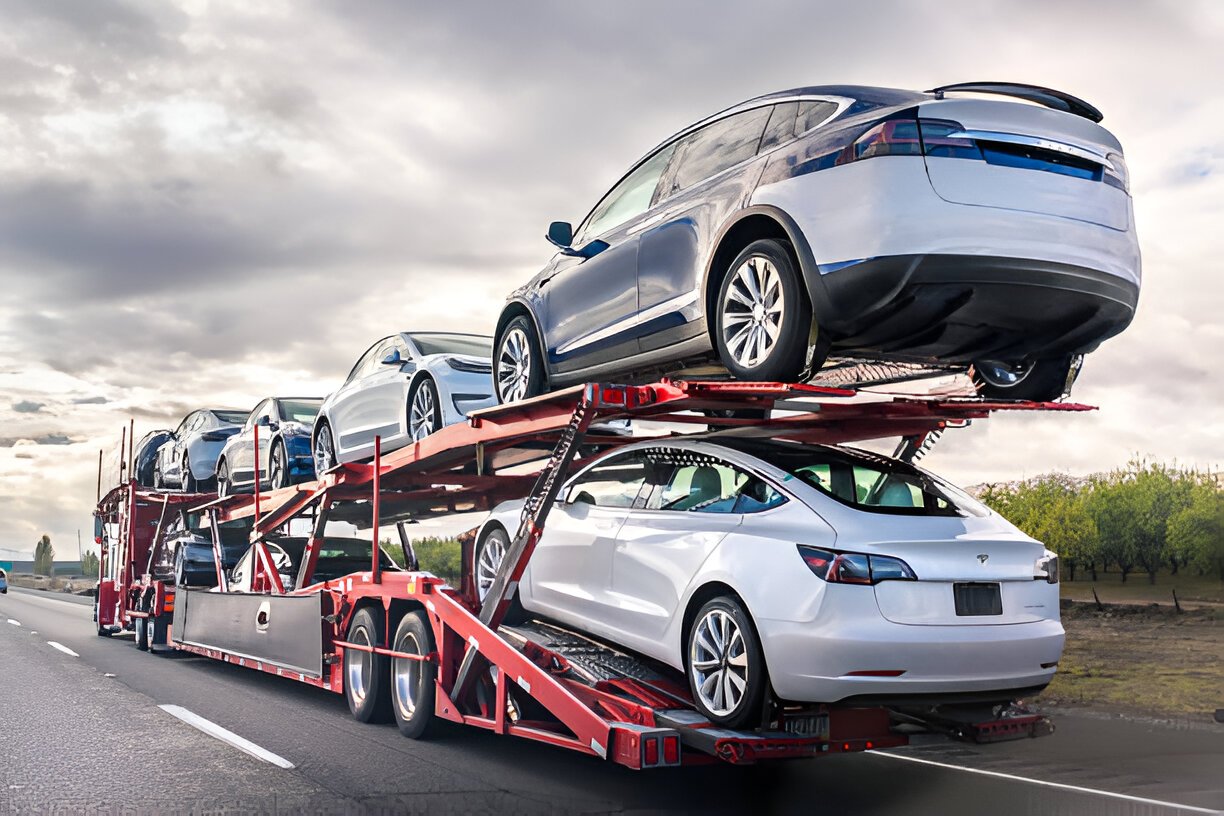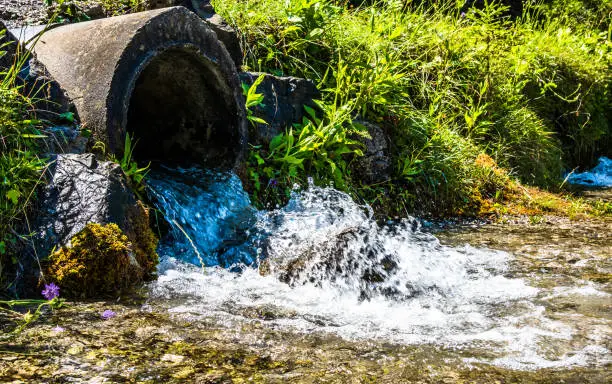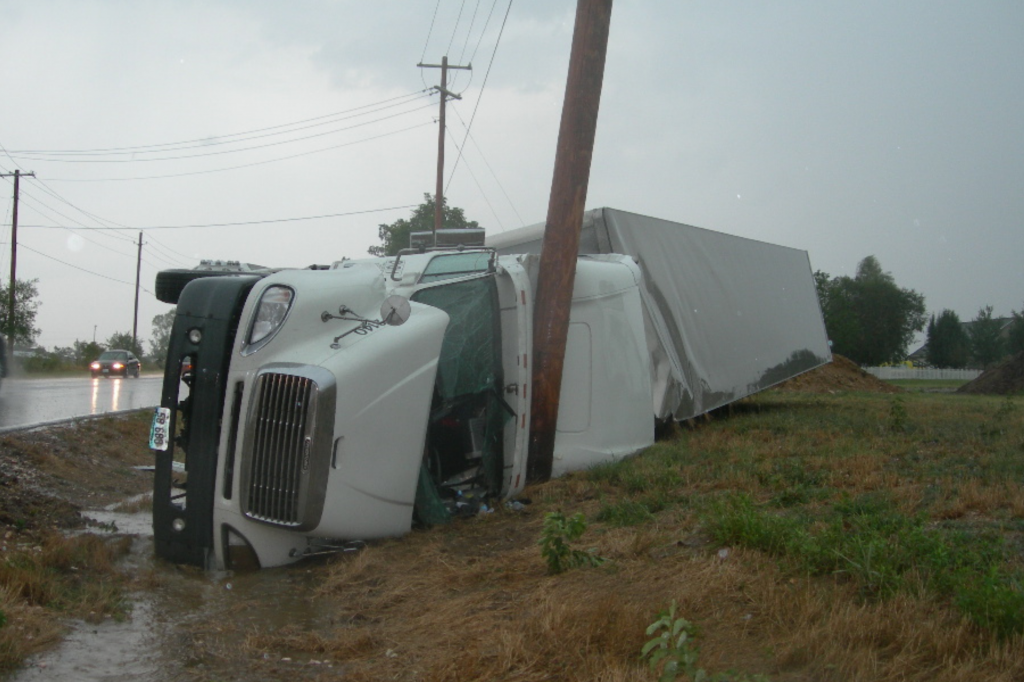Blog
How to Choose the Best Car Shipping Company

Choosing a car shipping company is important, whether you are relocating to a new state or moving to a new country. The right to pick is a trustworthy and reliable company that guarantees quality service. But with so many options, it may become tricky. This guide will walk you through the steps necessary to make sure the vehicle you own is well cared for.
1. Understand What You Need: Open or Enclosed Transport?
One of the foremost things to be considered while selecting a car shipping company is the type of transport that you require. There are two main choices: open and enclosed transport.
- Open Transport: Open transport tends to be the most widely utilized form of shipping a car. The vehicle in question will be shipped on an open trailer with other vehicles on the same trailer as well. Although open transport is the cheapest option available, the car may be damaged during transport due to the weather and road debris.
- Enclosed transport: Shielding cars from harsh environmental conditions, debris, and potential damage makes this method exceptionally safe and convenient for transporting valuable, classic, or high-end luxury cars. With peace of mind for owners of precious vehicles, this option, although typically more expensive, offers a greater level of security.
Action Step: Evaluate your vehicle’s protection needs alongside its value when deliberating between the two choices.
2. Investigate the Specific Expertise and Experience a Company Has
Experience is key, especially while looking for car shipping companies. Book the services of a company that predominantly ships vehicles of your type. For instance, high-end types such as classic and luxury cars require specialized attention. Hence, the specialists hired should understand the extensive care such automobiles demand during shipment.
You can be more confident in dealing with a company that has been operating for a while, as they will most likely have a wealth of successful shipments and satisfied customers. Remember to check the provider’s credentials, including certificates from industry regulatory bodies, because their absence may indicate that they’re not reputable.
Action Step: Verify the company’s history and expertise, especially if handling rare or high-value vehicles.
3. Collect Numerous Quotes and Assess Price Differences
The prices of car shipping may differ considerably due to the distance, type of vehicle, the mode of transport, and the intended delivery date. It is crucial to collect multiple quotes to assess the difference in prices.
Be careful of unrealistic low quotes; lower prices may look tempting, but they can mean less service. A company lacks an efficient standard operating procedure, which will be detrimental to the vehicle’s delivery if the quote is significantly lower than average. Use these quotes as measurements against their reputation and reliability, not as the endpoint.
Action Step: Obtain quotes from competing companies to identify who offers the best quote, considering the services provided. Pay attention to the fees involved in the quote, and note if they include all potential hidden fees.
4. Review the Shipping Company’s Insurance Protection and Coverage
One of the key elements of concern when shipping a car is the coverage it has while in transit. Confirm the presence of insurance with the shipping company and verify the extent to which the insurance will cover damage done to the vehicle; not every company offers comprehensive coverage. Different companies have different terms; some only cover partial damage, while others cover damage and theft, offering more comprehensive service.
When transporting a valuable vehicle, you may want to consider buying additional insurance for full coverage. Make sure to review the policy information and the prerequisites for claiming damages, if any.
Action Step: Request a copy of the insurer’s policy and verify that your vehicle will be sufficiently insured during transport.
5. Search for Reviews and Testimonials
Customer feedback proves to be a useful mark of professionalism; in addition, it tells you quite a lot about the reputation of the car shipping company. Preferred companies are those that have received good reviews and high ratings on review platforms like Google, Yelp, and the Better Business Bureau (BBB). Additional checks on social networks can help uncover honest customer reviews.
If you can, approach past customers and ask for recommendations or opinions. These types of recommendations tend to lead you to a good service provider.
Action Step: Explore the client’s reviews, ratings, and testimonials to get a sense of the company’s reputation.
6. Assess Customer Service and Communication Skills
Effective communication results in a seamless car shipping process. While reaching out to different car shipping companies, pay attention to their communication etiquette. Are they reachable? How well do customer service reps articulate their answers? Can you monitor your vehicle’s transportation progress through the monitoring services provided by them?
Your overall experience may be improved or worsened by the customer service offered. A car shipping company with effective communication and proactive updating of information reduces the anxieties you may have during the shipping period.
Take Action: Evaluate the customer’s service by calling or emailing them and posing questions regarding the procedure. Gauge the effectiveness of these simulations with respect to responsiveness and eagerness to assist.
7. Look at the Estimated Time Frame for Shipping
The distance from the pickup location to the delivery location and the shipping method selected are a few of the many factors that determine the time frame for shipping. Make it a point to discuss the time of delivery and validate the schedule set for pickup and delivery of the car.
If you have a strict timeline, for instance, if a job relocation is in the plans, communicate it with the company ahead of time. Most car shipping companies offer fast-tracked delivery services at an added fee.
Action Step: Specify the expected delivery timeframe and inquire whether there are any possible holdups due to weather and road conditions.
8. Get The Contract in Writing
Make sure that you get the contract in writing detailing all the terms, such as the price, delivery time, and insurance coverage. The contract must also detail provisions for damages or claims that may arise from issues that could occur during or after shipping.
A written contract functions as a safeguard for both parties, averting potential conflicts over misunderstandings regarding the shipment’s terms.
Action Step: Ensure all terms are reasonable and satisfactory before affixing your signature on the contract.
9. What to Expect When You Choose to Move My Car
The process is simple from your end. You have to schedule the vehicle’s transport and then communicate with the shipping company about the vehicle’s destination.
Be ready for a vehicle inspection prior to pickup, as the company will take note of any previous damage that you already possess. This is for the safety of both parties, should new damages go missing during the transport. Inspect the vehicle post-delivery to ensure that it retains the same condition.
Action Step: Attend the pickup and delivery inspection and document the vehicle’s state by taking pictures as evidence.
10. Things to Avoid When Picking A Car Shipping Company
While looking for a car shipping company, watch out for these red flags:
- No insurance or insufficient coverage details: Not providing information concerning insurance is a great indicator of trouble.
- Very low quotes: Suffice to say, extremely low prices are accompanied by terrible service or reasonable fees, not priced at face value.
- Unclear terms and conditions: If the agreement is vague with little info, not clear about the work, then the absence of no detailed contract or express willingness to elaborate, then it’s best to avoid doing business with them.
Action Step: Remain vigilant and ensure that all necessary information is provided beforehand by the company.
Conclusion
Picking the right car shipping company directly impacts the safety of your vehicles during transit. Through research and comparison aligned with preferences, the review feedback, and customer care, a decision can be reached. Choose between open and enclosed transport methods, but be certain of expectations regarding service, reliability, and professionalism. Following this guide ensures a hassle-free car shipping experience.
Blog
Beneath the Surface: How Smart Wastewater Is Quietly Transforming Rural Living

Amid the modern migration to rural areas and small towns, a technological transformation is quietly taking root underground—literally. In places where centralized sewer infrastructure remains out of reach, the everyday operation of septic systems has long been a background affair. Now, invisible innovations and digital tools are reshaping these vital systems, making wastewater treatment smarter, safer, and more precise. This new era is fueled not by promotion, but by tectonic shifts in design, data monitoring, and environmental stewardship. Homeowners, local officials, and environmental advocates are all taking notice.
Among the most significant drivers of change is the rise of digital monitoring in residential wastewater infrastructure. Well beyond the traditional inspection schedule, new smart sensors measure tank depth, effluent quality, and flow rates in real time, alerting residents and professionals to potential problems before they become costly emergencies. These smart systems are becoming especially pertinent as regulatory standards grow more rigorous and as climate uncertainty prompts rural communities to reevaluate the resilience of their infrastructure.
Integrating these smart solutions often begins with a septic tank upgrade, though the digital leap isn’t only about equipment. Using real-time data fosters proactive system care: maintenance becomes predictive rather than reactive, and the risk of groundwater contamination falls. As intelligent infrastructure tracks each tank’s status, it offers more than peace of mind; it fundamentally shifts how rural homes relate to their natural surroundings and resources.
The Environmental Angle
The digital revolution complements a simultaneous shift in ecological stewardship. Eco- friendly tank designs, advanced aerobic treatment units, and constructed wetlands are now part of the rural septic landscape. Many innovations aim to reduce energy consumption with solar-powered components and reduce nutrient pollution by improving the breakdown of nitrogen and phosphorus. These green upgrades comply with new regulations—they safeguard local ecosystems, from groundwater to rivers downstream.
In particular, adopting constructed wetlands, which filter wastewater through native plants and engineered soil beds, marks a profound change. These systems convert conventional drainfields into living treatment zones that enhance landscape beauty and water quality.
Such ecological solutions pair seamlessly with sensor-driven smart tanks to form “hybrid”
systems: nature and technology operating side by side, quietly protecting the local environment.
Community Data and Resilience
What’s emerging is not simply a collection of upgraded tanks, but a growing network—an underground infrastructure that offers big-picture benefits for rural communities. Data collected by smart septic systems can be aggregated (securely and anonymously) to reveal trends, such as whether groundwater levels are falling or if seasonal weather patterns are influencing septic system strain. With such knowledge, communities can better prepare for droughts, floods, or surges in population.
This collaborative approach moves septic care from an individual responsibility to a shared community asset. Public health officials and local planners can work with real numbers rather than educated guesses, targeting resources where they’re most needed.
Looking Forward
As climate risks make water infrastructure increasingly vulnerable, the convergence of ecological innovation and smart technology is changing what it means to be self-sufficient in rural America. The once-static septic tank is becoming a node in a living network— responsive, adaptive, and quietly essential.
For homeowners in rural areas, considering a septic tank upgrade is no longer just about maintenance; it’s about joining a larger movement toward resilient, mindful living. The invisible work of smart wastewater systems is reshaping underground infrastructure into something modern and deeply rooted in environmental consciousness. In this new era, rural resilience is not a promotional promise, but a quietly unfolding reality—one sensor, one wetland, one household at a time.
Blog
Tips for Gathering Evidence After a Commercial Vehicle Collision

People know New Mexico for its busy highways, open roadways, and desert scenery. Every day, a lot of trucks and other commercial vehicles drive through the state, which means that accidents can and do happen. A collision with a big truck can be quite bad.
If you are involved in a crash with a commercial vehicle, collecting the right evidence is very important. This is especially true when investigating New Mexico truck accidents. The more information you have, the better your chances of getting fair compensation for your injuries or damage.
Here are some simple and helpful tips for gathering evidence after a commercial vehicle collision.
Stay Safe First
Before doing anything, make sure you and anyone else involved are safe. If you can, move to a safe area away from traffic. Call 911 immediately to report the accident and ask for medical help if anyone is hurt.
Take Photos and Videos
Pictures and videos can tell what happened exactly. Use your phone to take clear photos of:
- The vehicles involved (from different angles)
- Damage to both vehicles
- The road conditions (wet, dry, cracked, etc.)
- Skid marks or broken glass
- Road signs or signals nearby
- Any injuries you or others have
Videos showing how traffic is flowing or the behavior of the truck driver can also be very helpful.
Get Contact Information
Gather names and contact info from:
- The truck driver
- Any passengers in the other vehicle
- Eyewitnesses who saw the crash
Also, write down the truck driver’s company name, license plate number, and the DOT (Department of Transportation) number on the truck if it’s visible.
Request the Police Report
When police come to the scene, they will make a report. This report is often key evidence. Ask how you can get a copy and write down the officer’s name and badge number. The report can include who they think was at fault and what the driver said.
Keep a Record of Your Injuries
Go to a doctor as soon as possible, even if you feel fine. Some injuries take time to show. Keep copies of all medical records, bills, and doctor’s notes. Write down how you feel each day after the crash. This can help show how the accident has affected your life.
Preserve Evidence from the Truck
Commercial vehicles often have important data stored in their “black box” or onboard computer. These devices can show speed, brake use, and more. A lawyer can help you request this data before it’s lost or erased. The trucking company may also have inspection logs and driver records that can support your case.
Avoid Posting on Social Media
It’s best not to post about the accident on Facebook, Instagram, or other platforms. Insurance companies can use your posts against you. Keep the details private and speak only with your lawyer or doctor about the crash.
Talk to an Attorney Early
Accidents involving trucks are more complex than regular car crashes. Trucking companies have teams of lawyers and insurers. A personal injury attorney who knows about investigating New Mexico truck accidents can help protect your rights and gather strong evidence before it’s too late.
Key Takeaways
- Always focus on safety first after a crash.
- Take photos, get witness info, and gather all records.
- Ask for the police report and keep medical documents.
- Don’t wait too long to seek legal help.
- Truck crash evidence can disappear fast—act quickly.
No one expects to get into a crash with a commercial vehicle. But if it happens, being prepared and knowing what steps to take can make a big difference in your recovery—both physically and financially.
Blog
Traditional Festivals in Modern China

When you learn Mandarin online or studying with an online Chinese teacher, the names of festivals such as 春节 (Spring Festival), 中秋节 (Mid-Autumn Festival), and 端午节 (Dragon Boat Festival) are often among the first pieces of cultural vocabulary encountered. Yet behind these familiar terms lies a long history of ritual practices, social customs, and symbolic meanings that have undergone significant transformation in modern Chinese society.
The Spring Festival, for instance, has always been the most important holiday in China, traditionally marked by ancestral worship, reunion dinners, and symbolic acts to welcome prosperity. In the past, rituals such as offering sacrifices to household gods or setting off firecrackers to ward off evil were central. While some of these customs remain, modernization has altered the festival landscape. Today, the Spring Festival is characterized as much by televised galas, digital 红包 (red envelopes) sent via mobile apps, and mass domestic travel as by traditional family rituals. The meaning of “reunion” persists, but its expression has expanded with technology and urban life.
The Mid-Autumn Festival also illustrates this transformation. Historically associated with moon worship and poetic reflection, its essence was rooted in agricultural cycles and ancient cosmology. Today, while the round mooncake continues to symbolize family unity, the festival is now also celebrated through commercial branding, tourism, and even large-scale public events. Its ancient connotations remain, but they coexist with contemporary interpretations that align with modern lifestyles.
The Dragon Boat Festival similarly demonstrates the adaptability of traditions. Once a ritual of exorcism and seasonal protection, centered on rowing boats to drive away disease and misfortune, it later became associated with commemorating the poet Qu Yuan. In contemporary China, the festival balances heritage activities such as dragon boat racing and eating 粽子 (rice dumplings) with broader cultural celebrations, often promoted as expressions of intangible cultural heritage.
At the language school GoEast Mandarin, discussions of Chinese festivals are essentially taught together with language instruction, ensuring that learners not only memorize terms but also gain an understanding of their evolution and continuing relevance.

 Blog9 months ago
Blog9 months agoHow to Deal with Scabies While Traveling

 Travel9 months ago
Travel9 months agoRichmond, Virginia Street Art Guide

 Travel9 months ago
Travel9 months agoPerhentian Islands: How to Get There, What to Expect, & More

 Travel9 months ago
Travel9 months agoHow to Live in Your Car in New Zealand

 Travel9 months ago
Travel9 months agoSouvenir in Nepal: A Guide to Unique Handicrafts and Cultural Treasures

 Travel9 months ago
Travel9 months agoVegan Guide to Dining Out in Richmond, Virginia

 Food9 months ago
Food9 months agoVegetarian Food Nepal: A Journey into Flavorful Plant-Based Cuisine

 Travel6 months ago
Travel6 months agoA Local’s Guide to Sanibel Island, Florida















